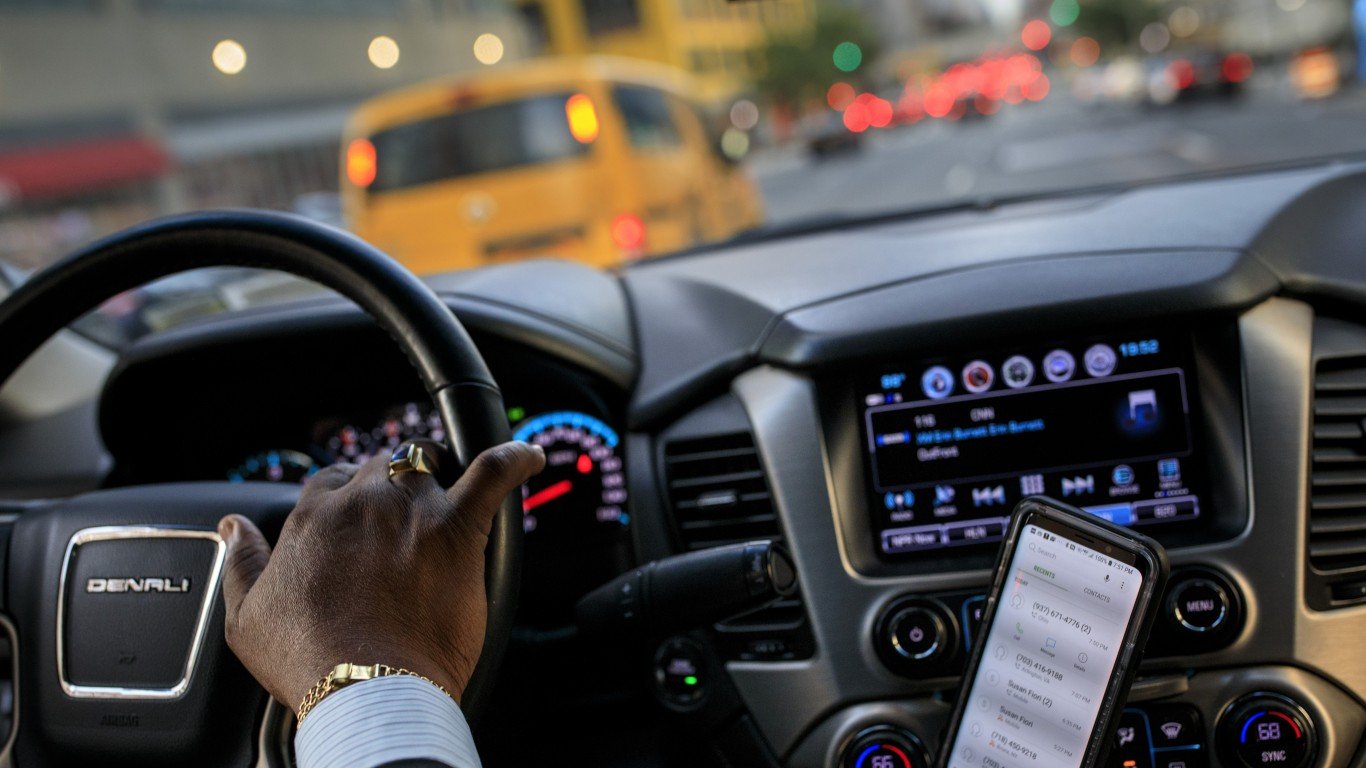

In a sign of recovery, Lyft (NASDAQ: LYFT) stock jumped this week after it revised the expected loss for the next quarter. The San Francisco-based company said the improved outlook is a result of increased ridership in May.
Shares of Lyft closed at $34.44 on Wednesday, up 8.71%. The stock is down nearly 20% year to date, but is up nearly 32% in the last month.
KeyCorp and DA Davidson reiterated their Buy ratings for Lyft this week, and Wedbush boosted its price target from $36 to $38. Overall, the stock has 29 Buy ratings, 12 Holds and one Sell. The average price target is $49.18
Riders Are Slowly Returning
In a regulatory filing, Lyft said May rides increased 26% over April. While May looked better, Lyft’s business is still way off the norm. The May 2020 ride numbers are 70% down from the year-ago period.
But observers are no doubt happy to see any increase in business as enterprises emerge from the pandemic lockdowns. “Rides have increased week-over-week for 7 consecutive weeks since the week ended April 12,” the company said.
The increase in rides varied widely by city. They were up 73% in Austin, Texas, 64% in Nashville, Tenn., and 59% in Miami. But ridership increased only 40% in Seattle — one of the earliest epicenters of COVID-19 in the U.S. Lyft saw a bump of 40% in Phoenix and 42% in New York City.
Lyft noted other changes in consumer behavior. “Riders are taking relatively more rides on weekdays versus weekends, including commute trips by essential workers as well as trips to stores selling essential goods,” it said. But the company has also seen an uptick in weekend usage during the past few weeks, as more states lifted lockdown restrictions.
Returning riders will find a different experience in Lyft cars. Before booking a ride, customers must accept a Health Safety Commitment. In doing so, riders certify that they don’t have COVID-19 and commit to wearing a face mask.
Lyft drivers must make a similar commitment and vow to keep their vehicles clean. Lyft would like to see front seats left empty, and windows left open whenever possible.
Competitor Uber Technologies Inc. (NYSE: UBER) also requires everyone to wear a mask. It further requires drivers to submit a selfie before accepting a ride to prove that they’re wearing a mask. Drivers or riders are allowed to cancel a trip without penalty if the other party doesn’t comply with the mask rule.
Next Quarter’s Outlook
If June ridership is similar, Lyft said it expects its adjusted earnings before interest, taxes, depreciation and amortization (EBITDA) loss for the second quarter will not exceed $325 million. The company had previously said its adjusted EBITDA loss for the quarter ending in June wouldn’t exceed $360 million.
It’s still a big loss, but who doesn’t like improvement? Second-quarter results are expected in early August.
For the first quarter, the ride-hailing company reported a net loss of $1.31 per share and $955.7 million in revenue, which compared with consensus estimates that called for a net loss of $0.64 per share and $897.86 million in revenue. The same period last year had a net loss of $48.53 per share and $776.0 million in revenue.
Lyft said this week that it’s taking additional steps to improve its financial outlook. Last month, the firm completed a convertible debt offering that resulted in an effective conversion price of $73.83 for the senior unsecured notes. “On a pro forma basis for these transactions, Lyft held approximately $3.3 billion of unrestricted cash, cash equivalents and short-term investments as of March 31,” the company said.
Coming Challenges
While recovering from the coronavirus pandemic, Lyft is also contending with several lawsuits and regulatory challenges. In the latest, a class-action lawsuit has been filed by a former driver in Washington, D.C., alleging that the company is violating a local law on paid sick days.
A bigger concern is the California attorney general’s suit against Uber and Lyft, contending that they improperly classify their drivers as independent contractors and evade workplace protections. The cities of Los Angeles, San Francisco and San Diego also joined in the suit, which was brought under a new state law intended to protect workers in the “gig economy.”
Similar efforts are underway in other states and cities. State and local governments want the ride hailers to classify their drivers as full-time employees, which has huge financial implications. The companies would need to offer health insurance and other worker benefits. And crucially, they would need to pay taxes to support state unemployment coffers.
If the ride-sharing companies had been forced to classify drivers as employees instead of independent contractors, they would have owed the state of California $413 million between 2014 and 2019. That’s according to an analysis from the UC Berkeley Labor Center. That money would have been due to California’s Unemployment Insurance Fund.
Both Lyft and Uber are fighting the moves, insisting that their drivers are independent contractors. The companies recently succeeded in getting an initiative on the November ballot in California that would enshrine their point of view into law. It’s not clear if voters will support the measure. But Uber, Lyft and Doordash committed $30 million each to push the ballot initiative.
Sponsored: Attention Savvy Investors: Speak to 3 Financial Experts – FREE
Ever wanted an extra set of eyes on an investment you’re considering? Now you can speak with up to 3 financial experts in your area for FREE. By simply
clicking here you can begin to match with financial professionals who can help guide you through the financial decisions you’re making. And the best part? The first conversation with them is free.
Click here to match with up to 3 financial pros who would be excited to help you make financial decisions.
Thank you for reading! Have some feedback for us?
Contact the 24/7 Wall St. editorial team.
 24/7 Wall St.
24/7 Wall St.


